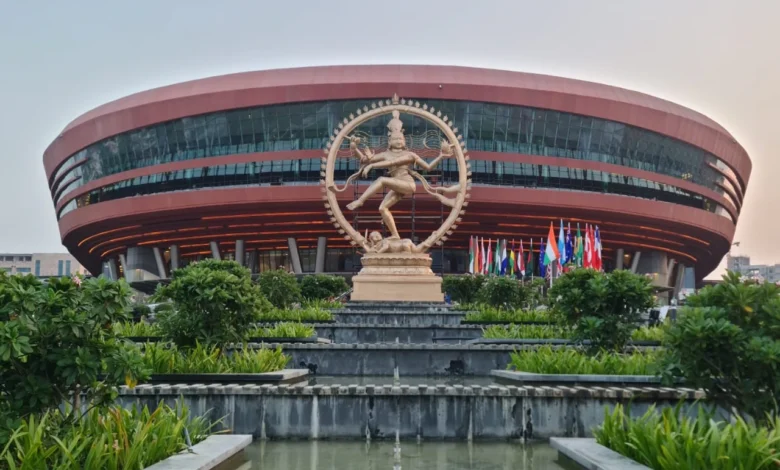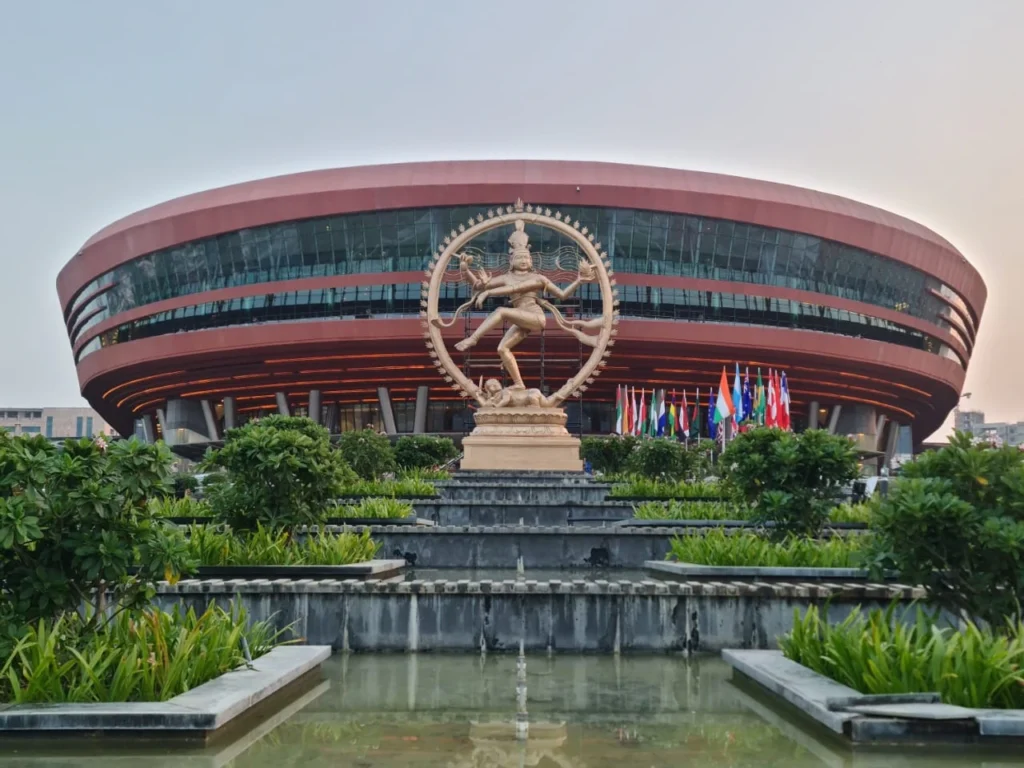
If you’ve been keeping an eye on the G20 summit headlines, you might have noticed a unique element adding a dash of cultural splendor to the prestigious event. Yes, we’re talking about the magnificent Nataraja statue that graced the G20 venue.
As an Indian, you might be curious to know more about this iconic representation of our rich cultural heritage being showcased on a global stage.
Prime Minister Narendra Modi has hailed the Nataraja statue, installed at the G20 venue, Pragati Maidan in Delhi, as a symbol of India’s rich, enduring traditions
This towering 27-foot icon journeyed from Tamil Nadu to Delhi via a special green corridor.
Here, we present nine fascinating facts about the Nataraja statue.
- The Nataraja statue is a depiction of the Hindu god Shiva as the cosmic ecstatic dancer. A powerful symbol of Indian culture, it represents the dance of the universe, a dance that creates, maintains, and destroys the cosmic cycle.
- This is not the first time the Nataraja statue has gained international attention. A smaller version of the statue is a permanent feature at CERN, the European Organization for Nuclear Research, symbolizing the cosmic dance of creation and destruction.
- The statue carries a deep philosophical and cultural meaning. Each element of the statue, from the fire ring to the demon under Nataraja’s feet, represents a certain aspect of life and the universe.
- Finally, the Nataraja statue at the G20 summit was not just a decorative piece. It served to remind the world leaders of the importance of balance and harmony in the world, much like the cosmic dance of Shiva.
- According to the Indira Gandhi National Centre for Arts (IGNCA), this 18-tonne marvel is the tallest statue ever made from Ashtadhatu, or eight metals. The metals employed in its creation are copper, zinc, lead, tin, silver, gold, mercury, and iron.
- The artistic genius behind the statue is Radhakrishnan Sthapaty from Swami Malai in Tamil Nadu, along with his team. They accomplished this feat in a record-breaking seven months. An interesting nugget is that 34 generations of Mr. Radhakrishnan’s family have been creating idols since the Chola Empire era. His father, master sculptor Devasenapathy Sthapati, is renowned for his exquisite Chola bronze sculptures, including those at the Rajarajeshwari temple in Delhi’s Janakpuri.
- The Nataraja statue is a result of the intricate lost-wax casting method. This process ensures finely detailed single-piece sculptures, with no welded parts to be found in the statue.
- A team of over 100 artists dedicated nearly 3.25 lakh man-hours to the statue’s creation, meticulously following the lost-wax casting process to craft this hollow masterpiece.
- The statue, completed at a cost of approximately ₹10-12 crore, was ready just in time for the G20 summit, as shared by Sachchidanand Joshi, member secretary, IGNCA.

Please, also have a look into : Huge Nataraja statue made of bronze to be placed at Bharat Mandapam during G20 Meet



